Oak wilt symptoms are active right now, but so are several other oak leaf diseases. Can you tell the difference?
Trees with oak wilt will suddenly start to drop their leaves in July and August. These leaves will be either tan or a water-soaked greenish color away from the petiole (leaf stem). Near the petiole there will often be an area that is still green, even though the leaf has fallen to the ground. Symptoms typically start near the top of the tree and progress downwards.
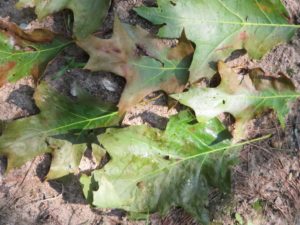
Leaves dropped from a tree dying from oak wilt. Note the discoloration on the distal portions of the leaf, while the petiole area is still green.

Oak wilt leaves often drop from the top of the tree first.
Anthracnose is a fungal leaf disease that is quite common this year due to the wet weather that we’ve had. Anthracnose is not fatal to the tree and the tree will hold these leaves throughout the season. Irregular areas of the leaf will be dead, and if this infection occurred when the leaf was expanding the leaf will often end up misshapen or puckered.
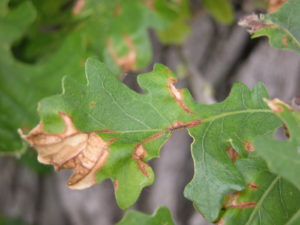
Anthracnose causes irregular dead blotches on the leaf.
Tubakia is another leaf disease that we will sometimes see. Symptoms are typically worse in the lower canopy. Leaves may drop from the tree but the pattern of mortality on the leaf will be different than what you see with oak wilt.
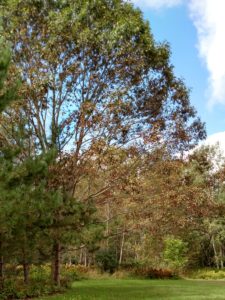
This oak is being affected by Tubakia, a fungal leaf disease. Symptoms are significantly worse in the lower canopy.
Written by: Linda Williams, forest health specialist, Woodruff, (Linda.Williams@wisconsin.gov), 715-356-5211 x232.


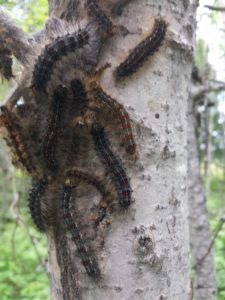
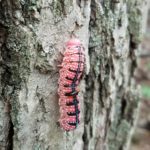
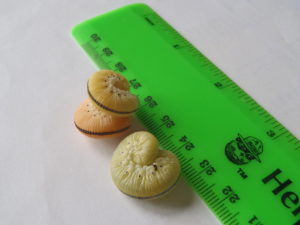 ere you can see how large elm sawfly larvae are, and there are some slight color differences in these. (Photo by Chris Plzak)
ere you can see how large elm sawfly larvae are, and there are some slight color differences in these. (Photo by Chris Plzak)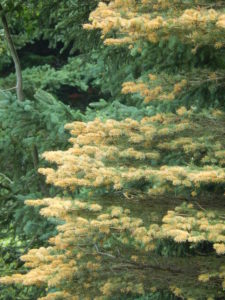
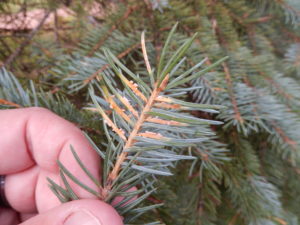

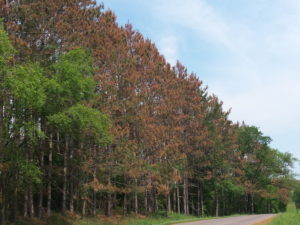
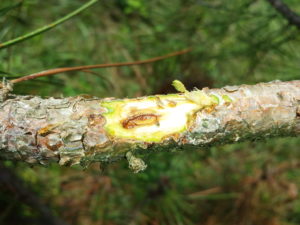
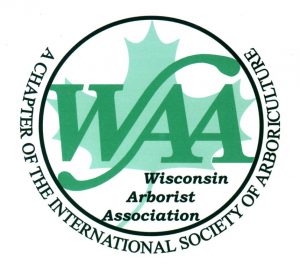 Join the WAA (Wisconsin Arborist Association) for their Summer Conference and Picnic at the Lussier Family Heritage Center in Madison on Tuesday, August 15th. The Program Committee has put together another excellent lineup for this event. They are offering Two Tracks of Education, one indoors and one outdoors, including information for climbers, plant selection, and insect and disease information. There will be something for everyone.
Join the WAA (Wisconsin Arborist Association) for their Summer Conference and Picnic at the Lussier Family Heritage Center in Madison on Tuesday, August 15th. The Program Committee has put together another excellent lineup for this event. They are offering Two Tracks of Education, one indoors and one outdoors, including information for climbers, plant selection, and insect and disease information. There will be something for everyone.